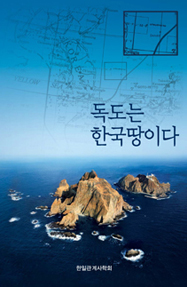- Dokdo in the East Sea
- Dokdo in History
- Dokdo is Korean Territory
Dokdo in the East Sea
Foreword

Japan has insisted that Dokdo is Japanese territory and that Japan has the territorial rights to Dokdo. The grounds stated for this claim are as follows: “We have long known of the existence of the islet, and established the territorial rights as late as the mid-seventeenth century. In 1905, the islet was officially incorporated as part of Shimane Prefecture under modern laws. Even in the San Francisco Peace Conference held in 1952 which spelled out the territories that Japan was to relinquish, Dokdo was not among them, which means the islet is still Japanese land.”
As will be seen below, this assertion is based upon false information designed to mislead people around the world, as well as Japanese. The truth is this: In the late seventeenth century, the Edo shogunate, the central government of Japan, made clear that Dokdo was not part of its territory, and the subsequent Meiji government later confirmed this fact twice, in 1870 and in 1877. But in 1905 the Meiji government proclaimed Dokdo to be an unnamed, uninhabited land and forced the islet into Shimane Prefecture, hiding the historical facts. As the Japanese government realized that this assertion was in violation of the theory of inherent territory, it later changed the reason from “prior occupation of an uninhabited land” to “reconfirmation of inherent territory.” However, no mention of the “confirmation” of Dokdo as Japanese territory before the Japanese government’s “reconfirmation” of Dokdo as Japanese territory has been found. At the San Francisco PeaceConference, Dokdo was clearly excluded from Japanese territory. Differing from the position of the United States Department of State, the United Kingdom recognized Dokdo as Korean territory. The reason for the disappearance of Dokdo from the official document was because of the compromise between the governments of the United States and the United Kingdom, not because of the tacit acknowledgement that the islet is part of Japanese territory. In other words, Japan went to great lengths to continue insisting on its territorial rights originating from imperial annexation by concealing decisive evidence proving otherwise.
This booklet clarifies the truth from the lies told by Japan. We hope that readers will learn the truth about Dokdo.
July 2008
- Dokdo is Korean Territory
-
Ⅰ. Roots of Territorial Claims to Dokdo
- 1. Korean Territorial Claims Proven by Japanese Historical Sources
- 2. Korean Territorial Claims Proven by Korean Historical Sources
- 3. The Japanese government’s claim that it established territorial rights over Dokdo in the mid-seventeenth century is a fabrication.
- 4. The Highest Decision-making Office in Japan’s Meiji Government Decides that Dokdo and Ulleung are Part of Korean Territory
- Ⅱ. On the declaration of territorial rights over Dokdo by the Korean government and the illegality of the island’s annexation in 1905 to Shimane Prefecture
- Ⅲ. Korea’s Territorial Rights to Dokdo Seen from Measures Taken by the Allied Powers after World War II
- Ⅳ. Korea’s Territorial Claims on Dokdo after the San Francisco Peace Treaty
- Ⅴ. Korea’s Territorial Rights over Dokdo Seen from International Law








